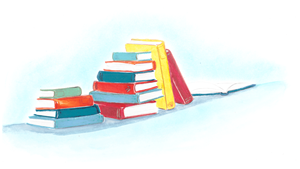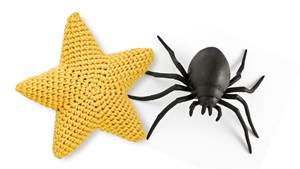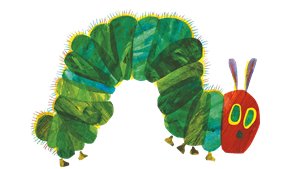 Which books to pick
Which books to pick
- When selecting books, choose titles which include clear pictures and good visual contrast. Books should be colourful, and look for simple pictures rather than pictures that are visually cluttered.
- If the book uses photographs, try to select books with a matte finish instead of a glossy one to reduce glare.
- Look for books where the print is not written across the pictures but instead is placed on a solid background.
- If any tactile or braille children's books are available, always use at least one of these in your story time session. You can find more information about how to get these books into your library here.
- Select reading materials that encourage the reader to make sounds or be extra expressive and that encourage participation (for example, you might ask children to hold objects related to the story, imitate animal sounds in the story, or say the repeated parts).
- Choose books that have repetitive sounds and rhythms, and encourage other members of staff, parents and carers to add their sound effects or voices. You could also talk about new or interesting words in the story, relate the story to familiar experiences, or suggest new experiences to try.
- Children with a visual impairment may not be familiar with things that they might otherwise take in from seeing the world around them, so it can be helpful to start with books that contain things that children have recently experienced. For example, books about going to the park, a trip to the seaside or a visit to the doctor would be ideal.
 Tactual exploration
Tactual exploration
Educators have long emphasised the importance of tactual exploration - hands-on learning for young children with a visual impairment.
This is important not just for future braille readers who will be using their finely-tuned sense of touch to discriminate between letters and to decode words, but really for all young children so that they can take in information, build concepts, and further understand their world.
Purposeful exploration involves thinking and concept building. Children gather information through the experiences that they have. This is how they develop an understanding of how things relate. These experiences give meaning to their lives through the development of concepts. Literacy emerges from hands-on experiences for all children.
Pairing objects with books and songs
 For younger children and those with learning disabilities, provide objects related to the story whenever possible, to actively involve the child and make it a concrete experience. Use or create book bags or book boxes to accompany stories and books.
For younger children and those with learning disabilities, provide objects related to the story whenever possible, to actively involve the child and make it a concrete experience. Use or create book bags or book boxes to accompany stories and books.
It's become hugely popular to create Rhymetime boxes including objects that children get to pull out to pick the next song: things such as a spider for 'Incy Wincy Spider' or a star for 'Twinkle Twinkle Little Star'. This is perfect for children with a visual impairment, as they are able to touch the object, work out what it is and then relate it to the song.
Note: Please make sure that you consider any regulations around cleaning objects used for an activity like this.
Running the session and using other senses
 Firstly, make sure the area in which the story time happens is well-lit, but not so bright that there are glare problems. Too much lighting and too little lighting can both be issues. If there is a window in the room and there aren't any blinds, it would be better for the children to have their backs to it.
Firstly, make sure the area in which the story time happens is well-lit, but not so bright that there are glare problems. Too much lighting and too little lighting can both be issues. If there is a window in the room and there aren't any blinds, it would be better for the children to have their backs to it.
Try and minimise visual clutter in the surrounding area so there aren't any visual distractions or backgrounds (such as rows of books) behind the person leading the session. If it's possible, a plain wall behind the person reading the story will make it easier for the children to see what's going on if they have some useful vision.
If you are able, try to use smell as well as touch and sound when holding a story time session. This is often more challenging, but if you are able to hold a story time session outside in a garden area, having grass, flowers and leaves available for children to smell and touch where they are mentioned in a story such as Little Red Riding Hood or The Very Hungry Caterpillar adds a tremendous amount of enrichment.
The most important thing is to make the experience as multi-sensory and immersive as possible. For example:
- Include toys and props that represent elements of the story and make sure anyone who is blind or partially sighted has the chance to handle these. A tactile experience will make the story more memorable for everyone.
- Take the opportunity to develop motor skills, so if the story includes a tree, invite everyone who can to stand like a tree, tall with arms out. This works well for blind and partially sighted children.
- Have high expectations. Don't assume that just because a child is blind that they wouldn't be interested in a visual subject, or that they couldn't get toys out or put books away. Also, encourage teamwork between fully sighted and blind children.

